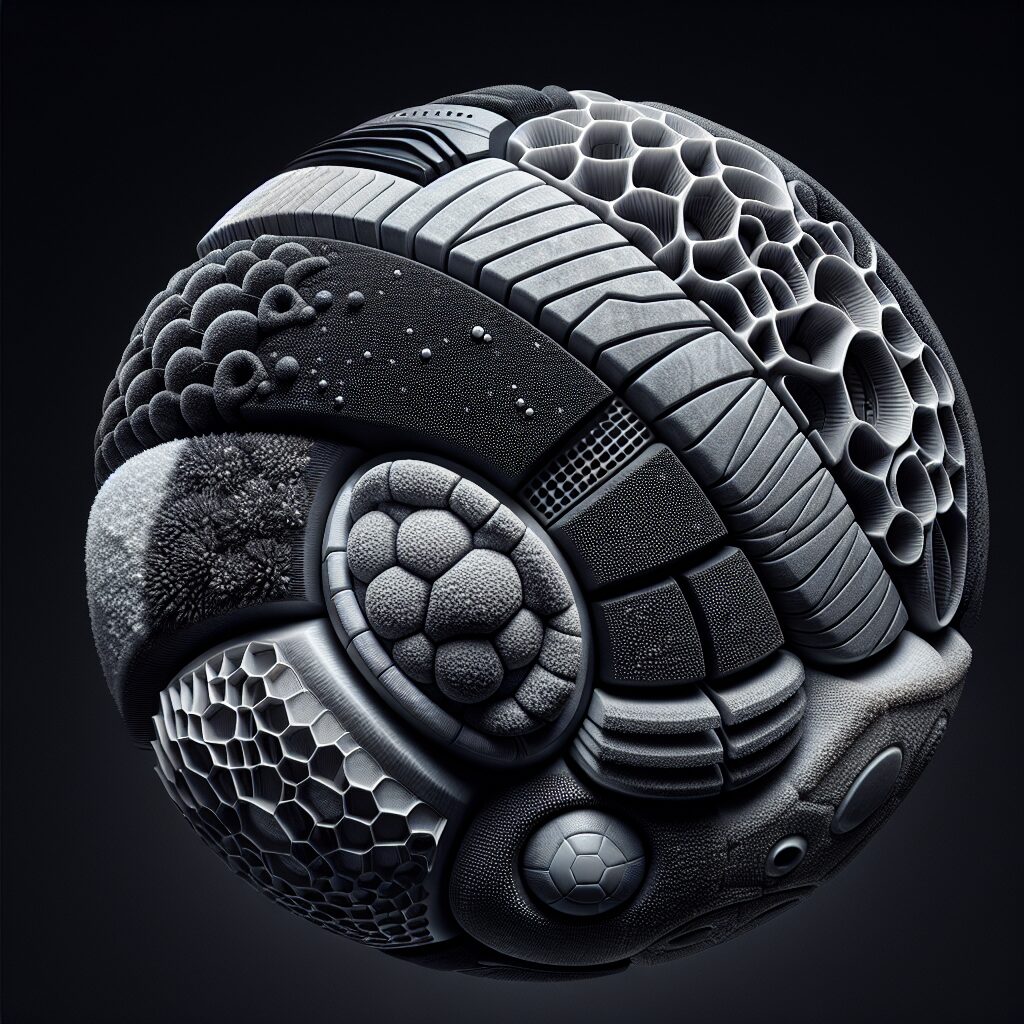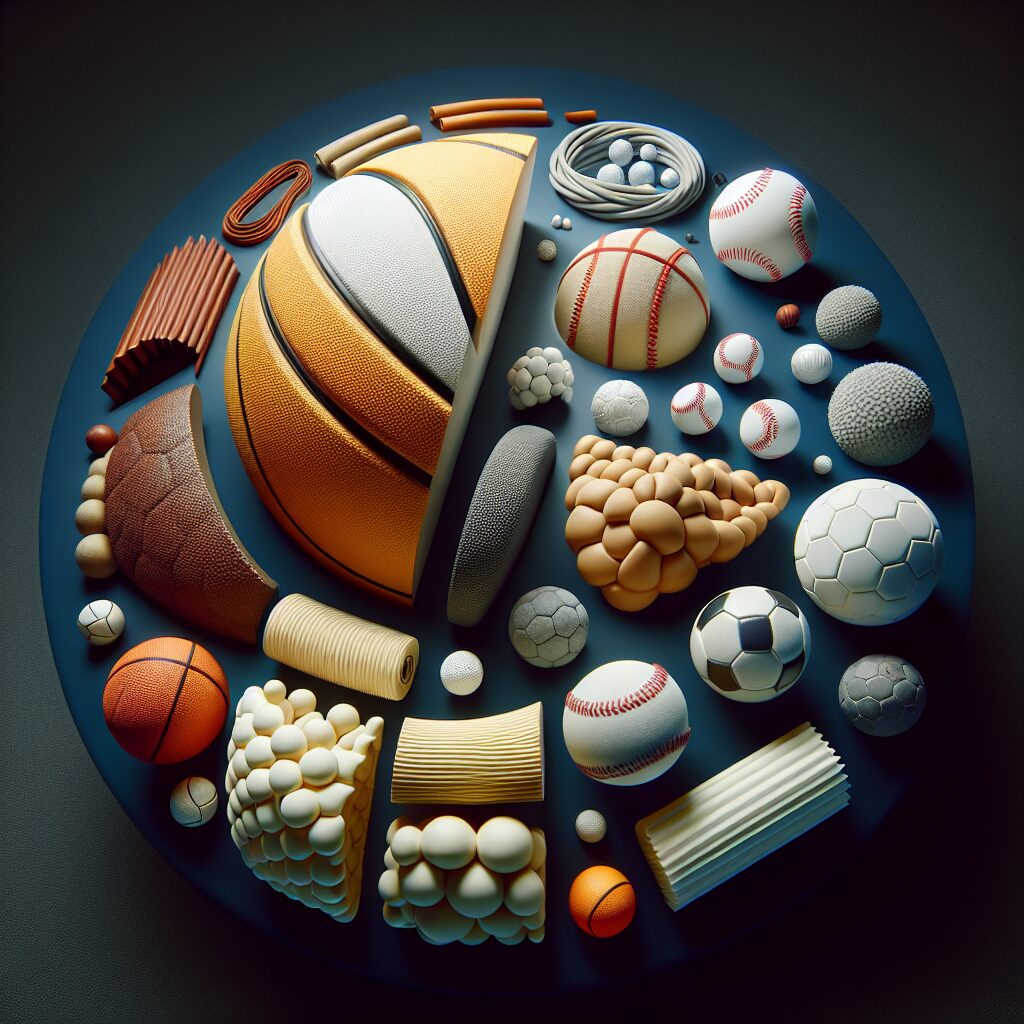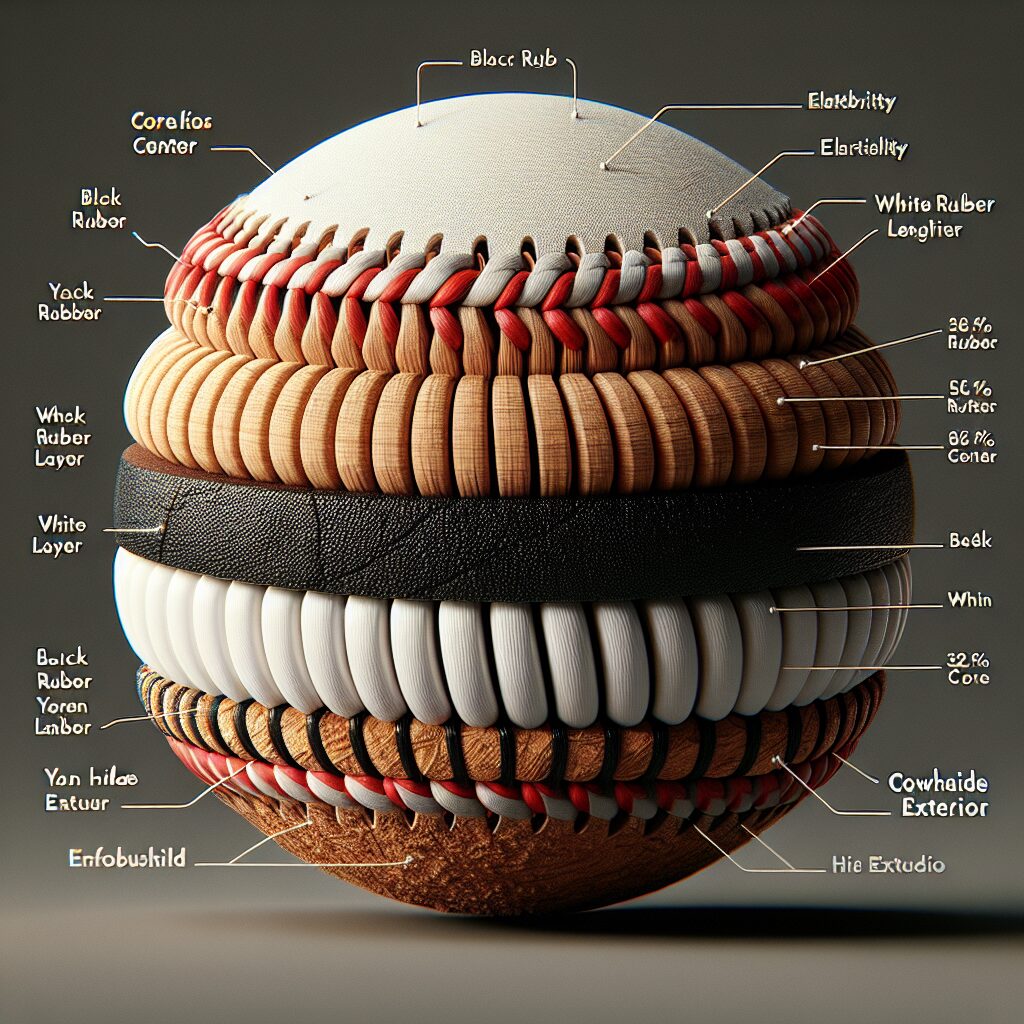Materials in Handball Balls: Impact on Performance
Handball, a fast-paced and gripping sport, requires players to possess exceptional skills and coordination. However, what most people tend to overlook is the importance of the equipment used in this intense game. In particular, the choice of materials used in handball balls can have a significant impact on players’ performance.
The materials used in handball balls play a crucial role in determining the speed, grip, and overall performance of the ball. For instance, a ball made from high-quality synthetic leather tends to provide better grip, allowing players to maintain control even during the most intense moments of the game. On the other hand, a ball made from a lower-quality material may result in slips, leading to mistakes and missed opportunities.
Moreover, the weight and bounce of the handball ball are also influenced by the materials used. A well-designed ball ensures a perfect balance of weight, allowing players to easily maneuver and pass with precision. Additionally, the bounce of the ball must be consistent and predictable to aid in efficient gameplay strategies.
In the upcoming sections, we will delve deeper into the key takeaways regarding the impact of materials in handball balls. We will explore the different types of materials commonly used, their individual advantages, and how they affect performance. Understanding these aspects will not only equip players with knowledge to make informed decisions when selecting a handball ball but also help coaches and trainers in maximizing their team’s potential on the court. So, let’s dive in and uncover the secrets behind selecting the perfect handball ball for superior performance.
Key Takeaways
1. Material plays a crucial role in the performance of handball balls, affecting grip, bounce, and players’ ability to control and manipulate the ball.
2. Traditional materials like natural leather have excellent grip properties but are not durable and may lose their effectiveness over time, while synthetic materials like PU and PVC offer better durability but might compromise grip.
3. The hardness and texture of the ball’s surface significantly influence its grip and bounce, with softer materials providing greater grip and more controlled bounce, while harder materials offer a faster bounce and improve shooting ability.
4. The construction of the ball, including the number and shape of panels, also influences its performance. Balls with fewer panels tend to offer better grip and control, while those with more panels provide improved stability and consistency in flight.
5. The development of new materials and technologies, such as microfiber materials and seamless designs, continue to enhance handball ball performance, offering better grip, durability, and overall playing experience for athletes.
Materials in Handball Balls: How do they Impact Performance?
Types of Materials Used in Handball Balls
Handball balls are made using various materials, each of which has a different impact on performance. The choice of material not only affects the ball’s durability but also its bounce, grip, and overall feel. Let’s explore the different types of materials commonly used in handball balls:
PVC (Polyvinyl Chloride)
PVC is a popular material used in handball balls due to its durability and affordability. It provides good grip and a consistent bounce, making it suitable for both indoor and outdoor play. However, PVC balls may lack the same level of softness and touch as other materials.
Polyurethane (PU)
Handball balls made from polyurethane offer enhanced grip and an improved feel compared to PVC balls. PU balls are typically more expensive but provide a higher level of performance. They are commonly used in professional handball leagues and competitions.
Rubber
Rubber handball balls are known for their excellent grip and control. They offer a softer touch and are ideal for players who prefer a more comfortable feel during the game. Rubber balls are commonly used for recreational and training purposes.
Leather
Leather handball balls are preferred by many professional players due to their exceptional feel and grip. The natural leather material provides superior control and enhances ball handling skills. However, leather balls require regular maintenance and may be more expensive than other options.
Impact of Materials on Performance
The choice of materials in handball balls has a significant impact on the overall performance of players. Let’s dive into how different materials affect various aspects of the game:
Bounce
The material used in handball balls greatly influences their bounce characteristics. Balls made from materials such as PVC and rubber tend to have a higher bounce, granting players more power in their throws and shots. Conversely, leather and PU balls offer a lower bounce, requiring players to adapt their playing style accordingly.
Grip
Grip is crucial for ball control and accurate handling during fast-paced handball games. Materials like rubber and leather provide excellent grip, allowing players to maintain better control over the ball. PU balls also offer good grip, but PVC balls may have a slightly lesser grip compared to other materials.
Durability
The durability of handball balls depends on the materials used in their construction. PVC balls are known for their durability and ability to withstand outdoor conditions. PU and leather balls are more prone to wear and tear but are designed for higher performance. Rubber balls, although durable, may degrade over time with frequent use.
Feel
The feel of a handball ball is subjective to personal preference. Leather balls, being natural and softer, provide a comfortable and familiar feel to players. PU balls offer a balance between softness and sturdiness, while PVC balls may feel slightly harder. Rubber balls have a unique texture that some players find enjoyable.
Guides for Choosing the Right Handball Ball Material
If you’re looking to select the most suitable handball ball material for your performance needs, consider the following tips:
- What is your playing style? Different materials suit different playing styles, so think about your preferences and how specific materials align with your gameplay.
- Consider the playing surface: If you typically play indoors, PU or leather balls may be optimal. For outdoor play, PVC or rubber balls can withstand tougher conditions.
- Budget: Determine your budget as higher-quality materials tend to come at a higher cost. Find the balance between performance and affordability.
- Seek the opinions of experienced players or coaches who can offer insights into the advantages and disadvantages of different ball materials.
- Test before purchasing: If possible, try out different balls with various materials to get a firsthand experience of how they feel and perform.
Discover the Perfect Material for Your Handball Balls!
Frequently Asked Questions
1. What materials are commonly used in handball balls?
Handball balls are typically made from a combination of synthetic materials such as polyurethane or PVC. These materials provide durability and a consistent bounce, ensuring optimal performance during games.
2. Does the material of a handball ball affect the player’s grip?
Yes, the material of a handball ball can greatly impact a player’s grip. Balls with a textured surface or a tacky material, such as rubber, offer enhanced grip, enabling players to have better control over the ball when passing, shooting, or dribbling.
3. Are there any benefits to using leather handball balls?
Leather handball balls were once commonly used and are still preferred by some players. Leather offers a softer feel and better ball control due to its natural grip. However, leather balls require more maintenance and may not be as durable as their synthetic counterparts.
4. How does the material affect the bounce of a handball ball?
The material of a handball ball plays a crucial role in determining its bounce. Synthetic materials tend to provide a more consistent and predictable bounce, making it easier for players to anticipate ball movements. Leather balls, on the other hand, may have a slightly less predictable bounce due to their softer nature.
5. Are there regulations regarding the materials used in handball balls?
Yes, the International Handball Federation (IHF) has specific regulations in place regarding the materials used in handball balls. These regulations ensure the balls meet certain standards of weight, size, grip, and bounce, promoting fair play and consistent performance across games.
6. Can the material of a handball ball affect its durability?
Absolutely. The choice of materials greatly impacts the durability of a handball ball. Synthetic materials like polyurethane and PVC are known to be more resilient and long-lasting, making them ideal for training or regular use. Leather balls, while offering superior control, may wear out faster and require more frequent replacements.
7. What should I consider when choosing a handball ball based on its material?
When selecting a handball ball based on its material, consider your playing style, preferences, and the level of play. Synthetic balls are generally recommended for beginners and those seeking durability, while leather balls may be preferred by advanced players looking for a softer feel and better grip.
8. How do different materials impact the flight characteristics of a handball ball?
The flight of a handball ball can be influenced by its material. Synthetic balls usually offer a more stable flight due to their consistent weight and aerodynamic properties. Leather balls, being more susceptible to environmental factors, may result in slight variations in flight depending on humidity and temperature.
9. Can the material of a handball ball affect its trajectory during shots?
Yes, the material of a handball ball can affect its trajectory during shots. Balls made from synthetic materials generally provide a more predictable trajectory, allowing players to execute precise shots. Leather balls, with their softer feel and grip, may require slight adjustments in shooting technique to achieve the desired trajectory.
10. How frequently should handball balls be replaced due to material degradation?
The frequency at which handball balls need to be replaced due to material degradation varies depending on the usage and materials used. Synthetic balls tend to have a longer lifespan and may last for several seasons, while leather balls may require more frequent replacements due to wear and tear.
Final Thoughts
When it comes to handball balls, the choice of materials can significantly impact a player’s performance and overall gameplay experience. Synthetic materials like polyurethane and PVC offer durability, consistent bounce, and predictable flight characteristics, making them suitable for various playing styles and levels. On the other hand, leather balls provide a softer feel, enhanced grip, and better ball control, appealing to players who value precision and a more traditional touch.
Ultimately, the decision between synthetic and leather handball balls relies on personal preferences and individual playing styles. It’s essential to consider factors such as grip, durability, and trajectory when selecting a ball. By understanding how different materials affect performance, handball players can make informed choices that optimize their abilities on the court.




